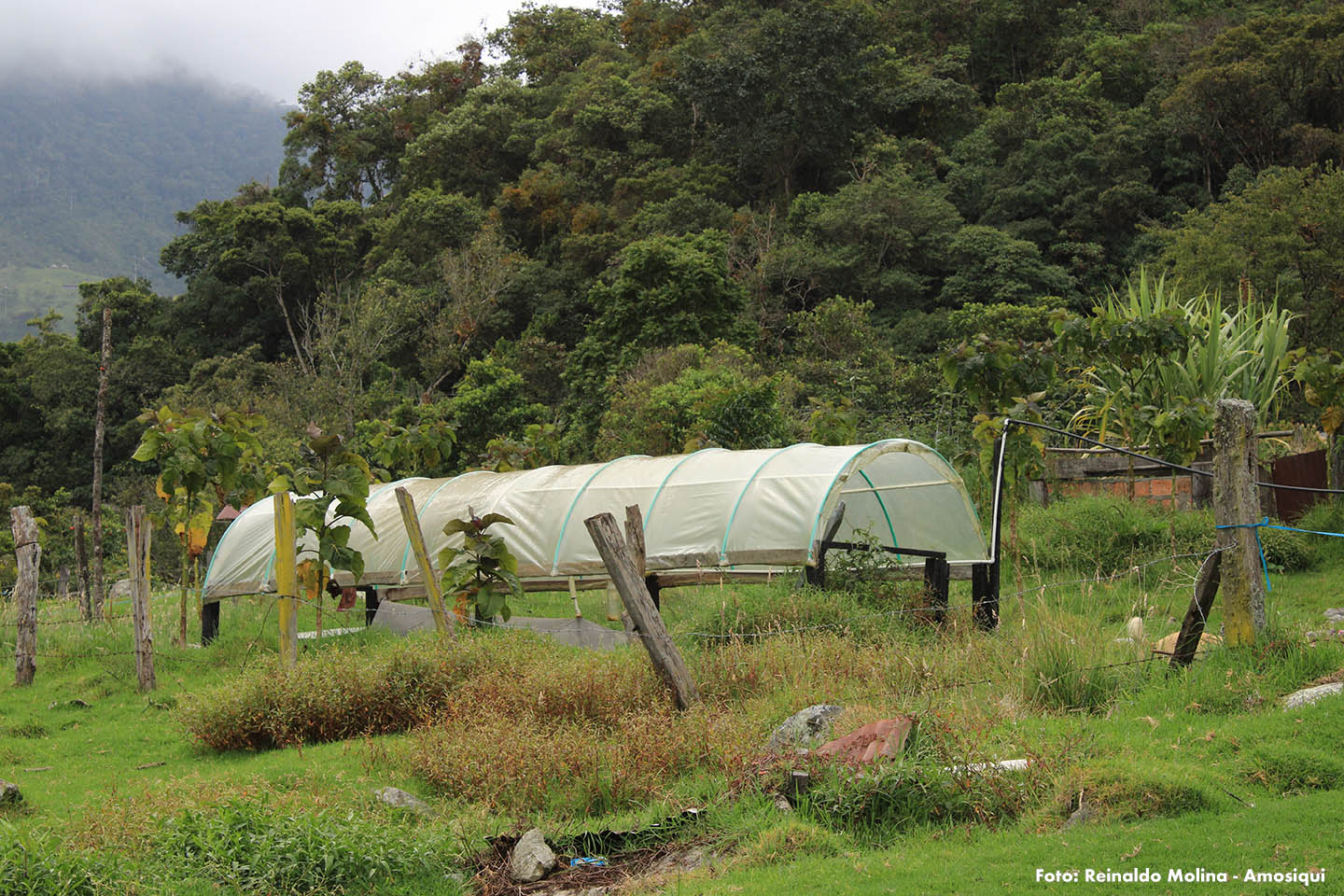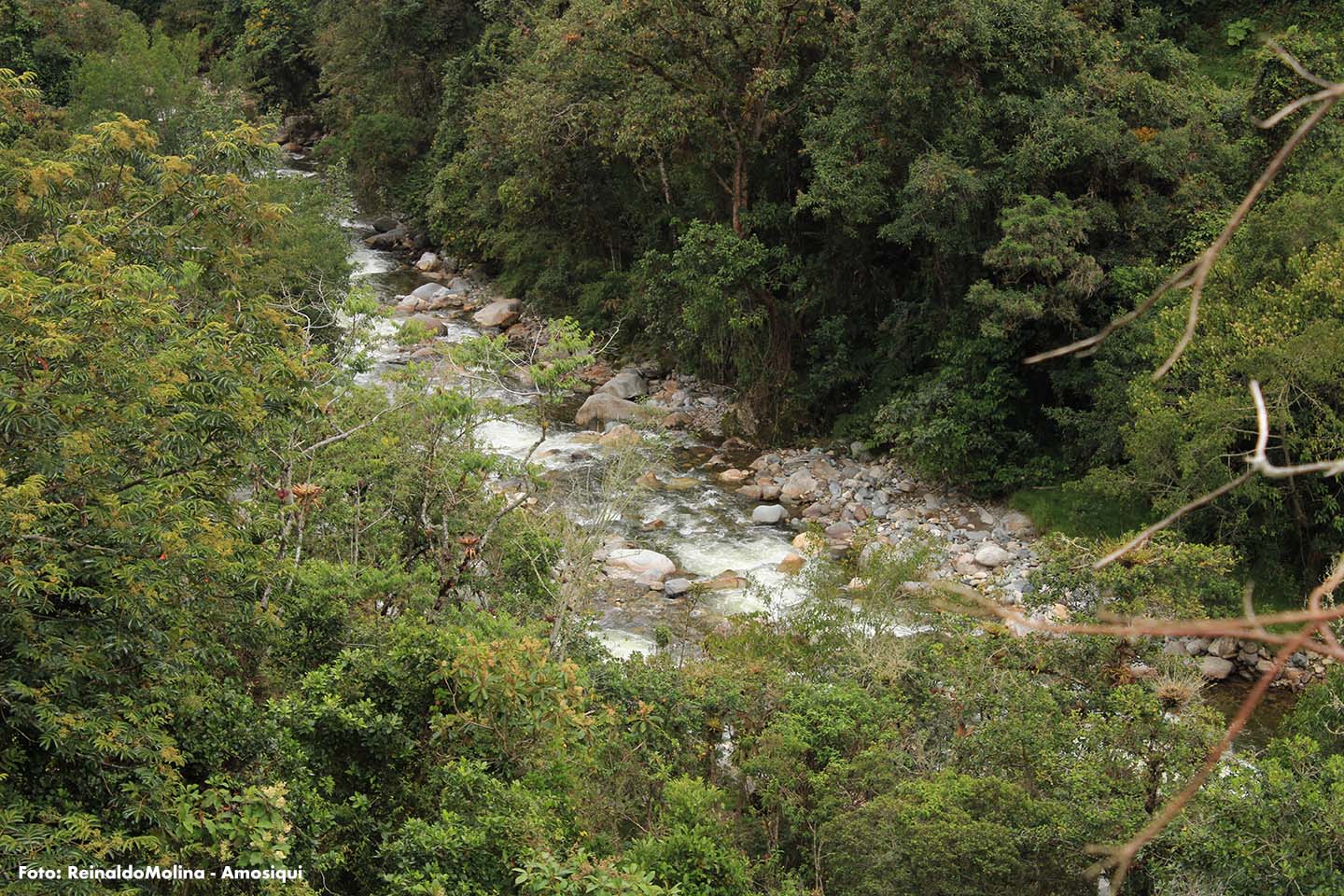They form part of the project ‘Río Saldaña, una cuenca de vida’. Besides working for the sustainability of agriculture and livestock farming, they implement different procedures to protect this resource, vital for their future. And they also protect fauna and flora species.

Nelson Leyton says he is committed to the care of the Siquila River. As it is undeniable that water is an irreplaceable resource, he says, its defense is the best legacy he can leave for his children. He is concerned with the protection of the river and implements actions to preserve it and is, therefore, contributing. Some time ago, to give an example, he became interested in the adequate handling of garbage to reduce the pollution of the basin. This trash sometimes affects his farm, La Esperanza, located in the rural settlement of Bilbao, in the municipality of Planadas.
The Siquila, the Amoyá and the Cucuana Rivers are three of the main tributaries of the Saldaña River, in the south of Tolima, one of the most important water sources of this Department that cannot be ignored. They are, additionally, the most important suppliers of ecosystem services that contribute to the development of municipalities and productive systems installed on their riverbanks.
Thus the importance of the public-private partnership that enabled the creation of the project ‘Río Saldaña, una cuenca de vida’ that seeks to protect and implement conservation actions in this region of the Department, with the participation of Parques Nacionales Naturales de Colombia, WCS Colombia, Corporación Autónoma Regional del Tolima (Cortolima), Agregados Argos and Fundación Grupo Argos.
The initiative was launched more than two years ago, a period dedicated to the development of the diagnosis and negotiation stages. The diagnosis stage identified the most evident threats on rivers and forests and prioritized sensitive areas and management strategies.

In an additional phase, called negotiation stage, voluntary agreements were made with land owners, like Nelson, who accepted to allot part of their farms for conservation purposes and the promotion of the custody of natural resources in their environment. In return, they receive training and technical support for the management of sustainable livestock farming and agriculture, ecological restoration activities, basic sanitation, installation of water filters and profitable use of organic waste with vermiculture.
One of the leaders of the community who has constantly supported this process is Francisco Javier Suárez. He lives in the rural settlement La Alemania, in the locality Las Hermosas, in Chaparral, and owns land near the Amoyá River, that supplies the hydroelectric plant of the same name. “We have a commitment with the conservation of this water source in this privileged place, because here we have a sense of belonging”, says Francisco.
Another action, which forms part of the implementation stage, is the prevention of forest loss due to the influence of productive systems such as livestock farming.
The proposal is to reduce the area of livestock concentration, thus recovering zones and lands where vegetation can grow again. The idea is to prevent livestock from moving freely through mountains or paramos, with the consequent pollution of those strategic areas, and to establish isolation systems with water troughs so livestock will concentrate in smaller areas, but with nourishing and more protein-rich grasses.
Another purpose is to restrain the pollution caused by coffee plantations in farms with a processing plant, where sometimes waste is dumped into the rivers during the production process of the grain. The purpose is to establish environmentally friendly and sustainable productive systems.
Plus a process of ecological restoration through the planting of native species to recover the forest, avoid erosion and construct a natural barrier to keep the rivers clear of garden animals.

For the achievement of this objective, two plant nurseries were constructed near the Siquila and Amoyá basins. They were installed in two local schools: Institución Educativa Técnica Agropecuaria Álvaro Molina (based in Gigante Hermosas) and Institución Educativa Bilbao (based in Siquila) and will be managed by the community. The trees grown there will be transplanted to places where restoration is required (active restoration).
Directly or indirectly, all the above mentioned actions support the conservation of species such as the spectacled bear, the torrent duck and the Zamia tolimensis (known in the region as cassava palm), a critically endangered plant.
“We are all involved in environmental conservation. If we do not take care of what we have, who will?” says Nelson. And, tuned in to this idea, many members of the community are circulating all this social effort, through the local communication group Ecoparche AmoSiqui, formed by teachers, students and residents, who have received training in photography, composition and graphic design. It is an instrument of information of what is happening in the community during the development of the project and an echo chamber that spreads messages of environmental conservation and protection.
The idea is to reach organizations and institutions with these same messages, to inform them of the work being done in the Saldaña basin. There is a basic idea behind all this: if the small rivers are protected, the big one is taken care of. Duván Alejandro Herrera, a young man from the rural settlement La Alemania agrees with this assumption and justifies all this environmental strategy with a phrase: “We have to continue preserving water; we are and will be nothing without it.”
